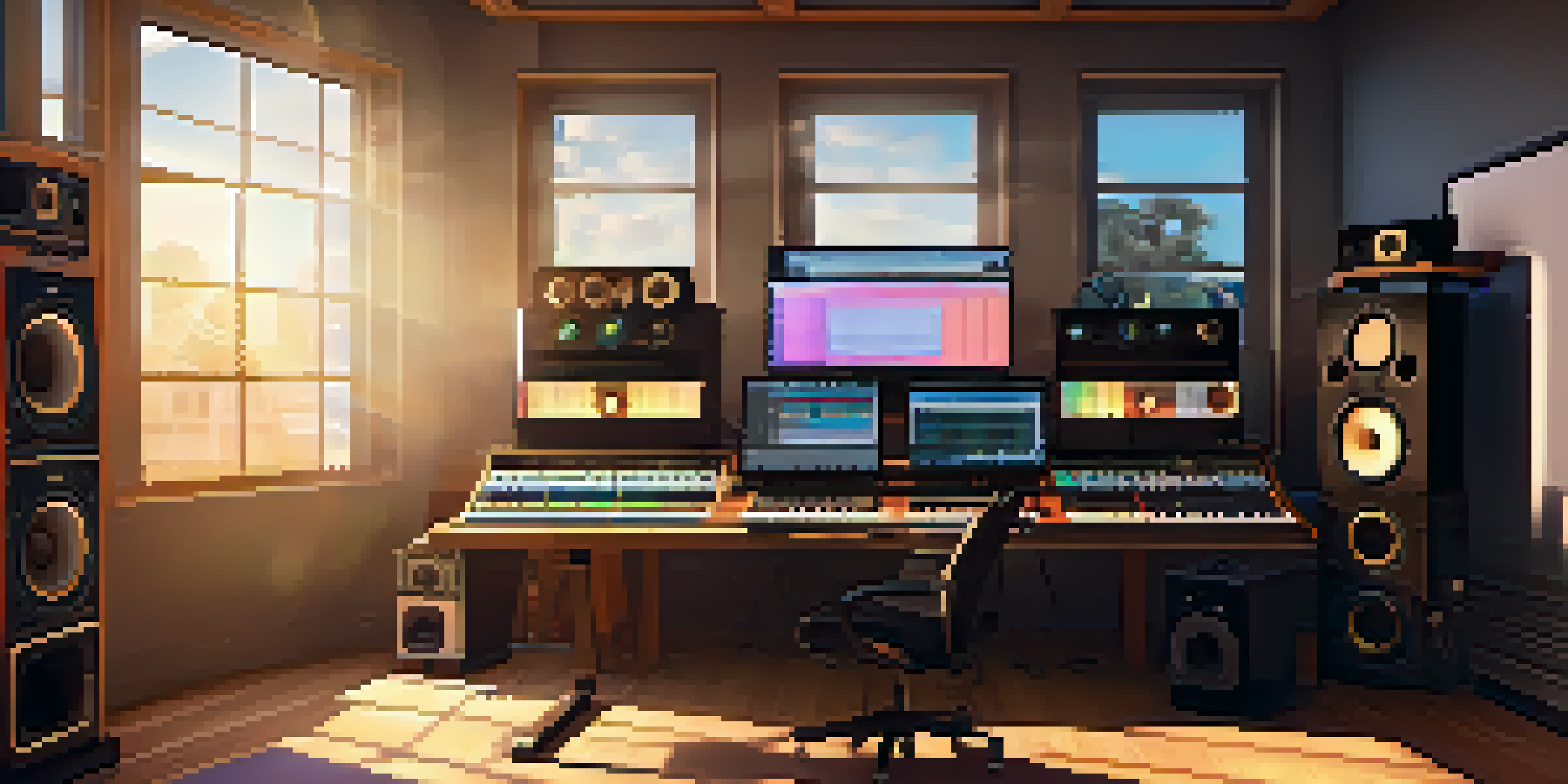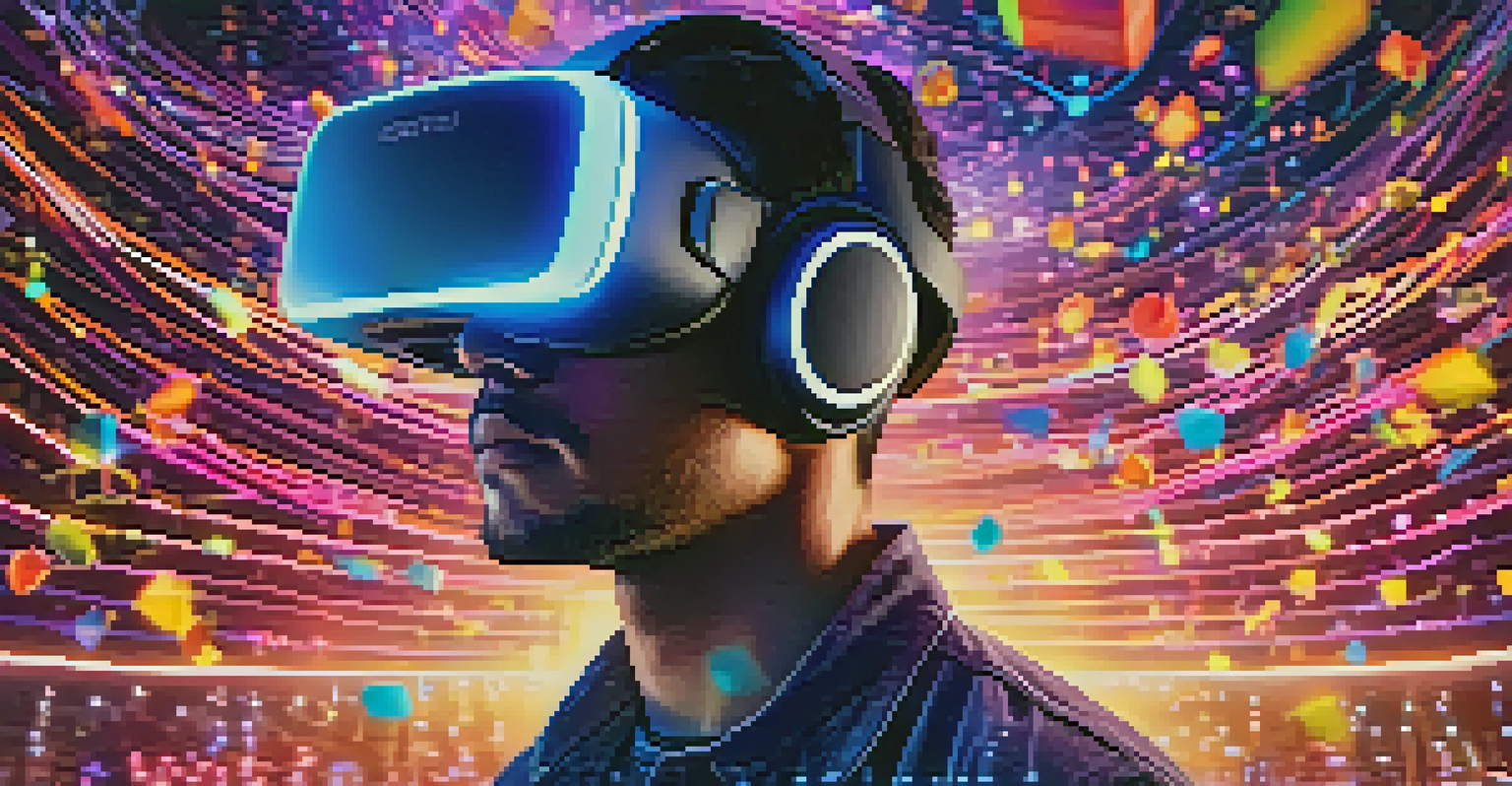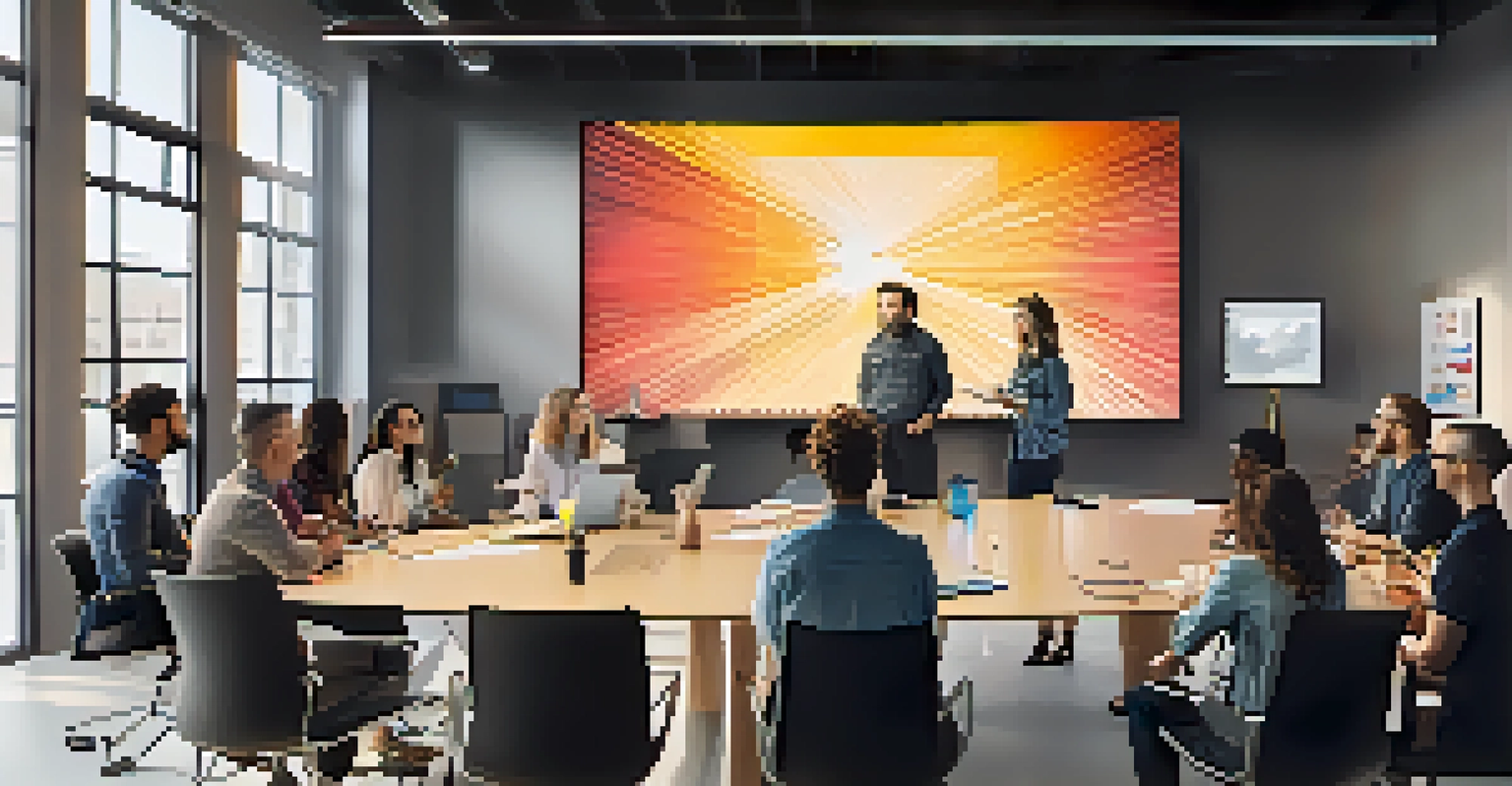The Art of Sound Design: Merging Score and Sound Effects

Understanding the Basics of Sound Design
Sound design is the craft of creating audio elements for various media, including film, video games, and theater. It involves both the score, which is the musical component, and sound effects, which are the auditory cues that enhance the narrative. Together, they work in harmony to create a more immersive experience for the audience.
Sound design is a fundamental part of storytelling. It shapes how we perceive the narrative and the emotions it evokes.
Imagine watching a suspenseful scene without the eerie music or the sound of footsteps creeping up behind the character. The absence of these elements would leave the viewer feeling disconnected from the emotional weight of the moment. Therefore, sound design is crucial in shaping how stories are told and perceived.
At its core, sound design is about evoking emotions and enhancing storytelling. It’s a blend of creativity and technical skill, where sound designers must understand how to balance music and effects to achieve the desired impact.
The Role of Music in Sound Design
Music plays a pivotal role in sound design, acting as the emotional backbone of a scene. A well-composed score can elevate a moment from ordinary to extraordinary; think of the stirring strings in a dramatic film score that pulls at your heartstrings. This emotional resonance is what makes music a powerful tool in storytelling.

Composers often collaborate closely with sound designers to ensure that the music complements the sound effects rather than competes with them. Finding this balance can be challenging but is essential for creating a cohesive audio experience. The goal is to enhance the narrative without overwhelming the audience.
Sound Design Enhances Storytelling
Sound design combines music and effects to evoke emotions and immerse the audience in the narrative.
An example of this collaboration can be seen in horror films, where the score builds tension while sound effects, like creaking doors or whispers, immerse the viewer in a sense of dread. This synergy between music and sound effects is what makes the viewing experience unforgettable.
Sound Effects: The Unsung Heroes of Storytelling
While music often takes center stage, sound effects deserve equal recognition for their impactful contributions to sound design. From the subtle rustle of leaves to the thunderous roar of an explosion, sound effects help create a sense of place and realism. They provide context and depth that can transport the audience into the story.
Music is the shorthand of emotion.
Consider a video game where every swing of a sword is accompanied by a unique sound effect. This attention to detail not only enhances gameplay but also pulls players deeper into the narrative. Good sound design means players feel every hit and every victory, making their experience more engaging.
Moreover, sound effects can also serve as cues for the audience, hinting at what’s to come. A faint whisper in a quiet room might signal an approaching danger, preparing the viewer for what’s next. This clever use of sound effects can elevate storytelling to another level.
Creating a Cohesive Soundscape
A cohesive soundscape is essential for any successful project, blending music and sound effects seamlessly. This involves careful planning and execution during the production process, where sound designers must consider how each element interacts with the others. Think of it like painting; each sound is a color that contributes to the overall picture.
The key is to layer sounds thoughtfully, ensuring that they complement rather than clash. For instance, a soft piano melody can work beautifully alongside the sound of a gentle breeze, creating a serene atmosphere. However, if the piano is too loud or the breeze is too subtle, the harmony is disrupted.
Collaboration is Key to Success
Effective sound design relies on teamwork among directors, composers, and sound designers to create a cohesive audio experience.
Ultimately, a well-crafted soundscape enhances the audience's experience, drawing them deeper into the story. When done correctly, the audience may not even consciously notice the sound design, which is a testament to its effectiveness.
The Impact of Technology on Sound Design
Advancements in technology have revolutionized sound design, enabling sound designers to create more immersive experiences than ever before. Digital audio workstations (DAWs) allow for precise editing and manipulation of sound, giving designers the tools to explore their creativity. This technological progress has opened new avenues for storytelling through sound.
For example, 3D audio technology enables sound designers to create a spatial sound experience that surrounds the audience. Imagine being in a theater where sounds seem to come from all directions, enhancing the feeling of being part of the action. This level of immersion was once unimaginable but is now becoming the norm.
Moreover, the rise of virtual reality (VR) has placed even greater emphasis on sound design, as it plays a crucial role in creating realistic environments. In VR, sound can guide users and help them navigate through the virtual world, making it feel more lifelike and interactive.
Collaboration in the Sound Design Process
Successful sound design is often the result of collaboration among various creative professionals, including directors, composers, and sound designers themselves. This teamwork is crucial, as each individual brings their unique perspective and expertise to the table. By working together, they can create a more compelling audio experience.
During the production process, regular communication is essential to ensure that everyone is on the same page regarding the project's vision. For instance, a director may have a specific emotional tone in mind, which can inform how the score and sound effects are crafted. This collaboration ensures that all audio elements align with the overall narrative.
Technology is Transforming Sound
Advancements like 3D audio and AI are revolutionizing sound design, allowing for more immersive and innovative storytelling.
Moreover, feedback loops within this collaborative environment can lead to innovative ideas and improvements. An open dialogue allows for experimentation and refinement, ultimately resulting in a polished final product that resonates with audiences.
Future Trends in Sound Design
As technology continues to evolve, so will sound design, opening up exciting possibilities for the future. One trend to watch is the increasing use of artificial intelligence (AI) to assist in sound creation and editing. AI can analyze patterns in sound and suggest improvements, potentially streamlining the creative process and allowing designers to focus on their artistry.
Additionally, immersive audio experiences are likely to become more mainstream. As consumers embrace technologies like augmented reality (AR) and VR, sound design will play a pivotal role in creating engaging, interactive environments. This shift will require sound designers to be adaptable and innovative in their approach.

Ultimately, the future of sound design promises to be dynamic and evolving, with new tools and techniques that will further enhance storytelling. As we look ahead, one thing is certain: the art of merging score and sound effects will continue to captivate audiences and enrich their experiences.